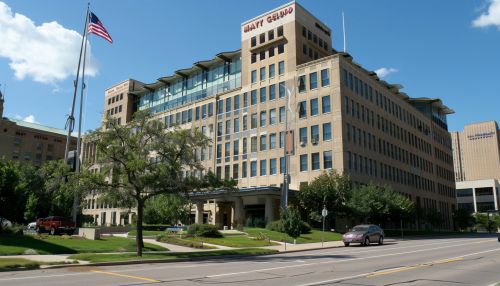Mayo Clinic
History
The Mayo Clinic is a nonprofit American academic medical center focused on integrated health care, education, and research. It employs over 4,500 physicians and scientists, along with another 58,400 administrative and allied health staff. The practice specializes in treating difficult cases through tertiary care and transplantation. It spends over $660 million a year on research and has more than 3,000 full-time research personnel.


The Mayo Clinic began in 1864, when William Worrall Mayo came to Rochester, Minnesota as part of Abraham Lincoln's plan to recruit new physicians for the Civil War effort. After the war, Mayo opened his medical practice and was later joined by his sons, William J. Mayo and Charles H. Mayo. The family practice became known for its innovative surgeries and the integrated care it provided.
The Mayo Clinic has expanded over the years, with campuses in Arizona and Florida, and the Mayo Clinic Health System operating dozens of smaller hospitals and clinics in Minnesota, Wisconsin, and Iowa. The Mayo Clinic College of Medicine and Science, the education arm of Mayo Clinic, offers training for over 4,000 students each year in biomedical research, patient care, and allied health sciences.
Medical Practice
The Mayo Clinic's approach to patient care has been defined by its "patient-centered" philosophy. This approach emphasizes the needs of the patient first, an approach that has become a model in medical care. The Mayo Clinic provides comprehensive diagnosis and treatment in virtually every medical specialty, including cardiology, neurology, orthopedics, and transplant services.
The Mayo Clinic's patient care is characterized by a team approach where several specialists collaborate to provide a comprehensive treatment plan for patients. This multidisciplinary approach is facilitated by the Mayo Clinic's extensive system of electronic medical records, telemedicine, and other high-tech systems that allow for coordinated care among various specialties.
Research and Education
The Mayo Clinic is a leader in medical research, with thousands of research studies and clinical trials underway at any given time. These studies cover a wide range of areas, from basic biomedical research in the lab to clinical trials testing new treatments and therapies. The Mayo Clinic's research efforts are supported by its own graduate school of biomedical sciences, which trains future scientists and physicians.
The Mayo Clinic College of Medicine and Science offers a wide range of education programs, including undergraduate medical education, residency and fellowship programs, graduate medical education, and continuing professional development courses. The college is known for its small class sizes, high faculty-to-student ratio, and access to patient care experiences from the first year of medical school.
Impact and Influence
The Mayo Clinic's impact on the field of medicine is significant. Its model of integrated, multidisciplinary care has been replicated by other medical institutions around the world. The Mayo Clinic's research has led to advancements in treatment for a variety of diseases and conditions, and its education programs have trained thousands of physicians and scientists.
The Mayo Clinic has consistently been ranked among the top hospitals in the United States by U.S. News & World Report, and it is internationally recognized for its leadership in healthcare. The Mayo Clinic's commitment to innovation, research, and patient-centered care continues to shape the future of healthcare.
